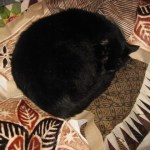Last year I had the honour to be invited to speak at the Auckland Quilt Guild on what a quilt judge looks for in a quilt. Much to my amazement this has become a popular topic, and it was suggested I pass on my thoughts in the blog. I have to say that my expertise is more at entering quilt competitions (about 90 of them – I’ve lost track, but could put “quilt competition junkie” as occupation!) than judging them, but here are some of my experiences over the past 20 years.
Looking for an appropriate folder on my computer to write my ideas and notes down for the original talk, I came across the column I wrote for a while for the old NANZQ newsletter back in 2006!!! I have come quite a way in the last 8 years (as well as full circle) but what I wrote back then still holds true.
I was writing about everything that goes into developing a class and subsequently teaching it, something I have much more experience of than judging. I wrote:
I certainly hope end results hang in a quilt show. Quilters can be self-depreciating, often with a misplaced low opinion of their work. WHAT WILL OTHER PEOPLE THINK OF MY WORK……Shock!! Horror!! They might actually love it, you might even win a prize. And the wonderful feeling you get when you walk into a hall and view YOUR quilt, from a distance…..the adrenalin rush……the urge to go home and make another……!!!”
Not all competitions provide a judge’s feedback, but if they do it can be very useful, but don’t let it get you down. I am a firm believer in praise, and positive comments, but this is not necessarily what you will get with a judge’s comments. They are not the Be All and End All, and should you not agree with what the judge has written, that is fine, just move on. More on that later.
A quilt judge is human, and although we try to be impartial it is inevitable that each of us likes certain things. So what do I look for, in no particular order? (Quilt = bed-quilt or wall-hanging.)
- The WOW factor – it’s often a gut feeling, when you know you are looking at a really special quilt, a winner.
- Challenge fabric, such as in the Hoffman Challenge – is it integrated into quilt? Is there plenty of it, not just a tiny triangle and not just the binding! If you have lots left over, use it as the backing (see # 11).
- Theme – does it meet the challenge theme? It is always interesting to see the different ways people interpret a theme. If it is for a themed exhibition, quilts that overall work well together will be the ones selected.
- Size and shape – allow for bindings in the size of piece, as well as any embellishments that may hang over the edge. If it has to be an unusual shape as in the Hoffman Challenge, is the shape relevant to the design? Rounding one corner off a rectangle is not really enough of an alteration, for a shape that is not to be rectangular.
- Colour and value – good contrast so your design shows. The light the piece is hanging in can make a big difference to how it looks. When choosing fabrics for your quilt, lay them out and look at the colours and contrast at different times of the day and night, in different lights.
- Embellishments – OTT? Does it need them? If you take the item away, do you miss it? If the answer is yes, then it needs to be included. Will the embellishments travel OK, especially if the quilt is folded?
- Bindings – I am very particular about these. Often a quilt, especially art quilts, is spoilt by inappropriate binding. While I like the colour black, a black binding is not always right. Facings are great, bagging out is another option provided you have quilted the piece evenly all over. Both work well for odd shaped quilts. Avoid unnecessary joins in your binding. I often see miniatures/small wall-hangings with umpteen joins in the binding. The only time this works is if you piece a binding from lots of different fabrics which are repeated in the quilt. Consider fabric bindings which are the same as the border.
- How does it hang? Is the hanging sleeve in the right place and the required size? This is hard with a bed quilt, but there’s no excuse with wall-hangings. Try it out, if possible hang it overnight. It should hang square and flat with the wall. If it doesn’t, steam and block the quilt.
- Workmanship. Have you done the best job possible?
- Quilting – the thorny one, how much is the right amount? Personally I am not a big fan of heavy quilting. But I know the quilting MUST BE EVEN over the quilt, and sufficient to hold the 3 layers together securely. With machine quilting, make sure your bobbin thread matches the back (please no black thread on calico!). If the bobbin threads are appearing on the front, check tension.
- The back of your quilt, another thorny one and very important to me. Use an appropriate backing to the front. A patterned one will not show any hiccups in the quilting. Tie off threads on the back – thread the 2 threads on a needle (an easy (self) threading one is easier), insert the needle back in by the knot and run the threads about a 1” through the quilt layers, out again and cut off. The back should look as good as the front for finish.
- Focal point – it should have one, unless it is a traditional block quilt.
- Blood, coffee and all the other things that can end up on a quilt – make sure your quilt is clean. If you get blood on your quilt, lick it off as soon as the blood goes on. Your saliva will remove it.
- And finally the bane of quilters – cat fur. Have you noticed the instant you lay your quilt out on the floor for any reason, your beloved cat appears from nowhere and within 10 seconds is sitting in the middle of your quilt washing itself.
In the next episode I will cover things like entry forms and artist’s statements, and reveal some of the judges’ comments I have received over the years. Watch this space.
Juliet Fitness



Good article Juliet. I learnt years ago when making wedding dresses to remove blood by chewing some white thread into a small ball then use it to remove the blood. Never fails!
At exhibitions I like to ask myself why the judges have awarded a prize to the quilt and study it carefully. Sometimes it can be a challenge if the quilt is not to my taste but there is a lot to be learnt if I take the time to do that. Returning later for another look is always good if time allows.